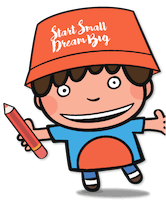Stage 6:
In stage 6, the children explored the life cycle of a muscular and cold- blooded sea creature, the shark!
The children learnt fun facts about the shark as well as how different species of sharks give birth/ lay eggs.
As a follow up, the children created their own shark ‘aquarium’ using their unique palm prints and dainty rocks.
Stage 7:
In stage 7, the children learnt the life cycle of one of their favourite sea creatures, the sea turtle! They had a blast watching videos of the hatchlings and young as they made their way into the sea.
Stage 8:
In stage 8, the children began to dive into the deeper issue in relation to our topic, pollution. The children watched a short animation called ‘The Whale’s Tale’ which convincingly opened the children’s eyes to the consequences of pollution and how it does affect the Marine Life. The children were touched and encouraged by how the Whale and its’ sea animal friends helped one another to clean their home. Additionally, the children took initiative in sharing that they can also do their part to save the Marine Life by picking up rubbish and throwing them into the bin as well as reducing water wastage in their daily routines.
To allow the children to have first- hand experience of how pollution looks and feels like, we conducted a small experiment whereby they polluted the ‘sea’ and touched the ‘sea animals’ that were covered by ‘oil spills’. Subsequently, the children also attempted to wash and brush off the ‘oil spill’ which they describe the process being ‘yucky’, ‘sticky’, ‘hard to come out’ and so forth. From this mini experiment, the children are able to put themselves in the shoes of the sea creatures and understand that pollution causes harm and a great deal of sadness and frustration for the Marine Life.
Stage 9:
To lighten the mood after discussing a serious and damaging sub- topic, the children engaged in learning all about ‘Poisonous Animals’. To start off, they learnt about the ‘Stingray’! The children educated themselves with some facts of the sea creature and watched a video of how the stingray stings/ attacks when its’ in fear or danger. Moreover, we also took the opportunity to educate children on the dangers of touching sea animals/plants without an adult’s supervision or professional’s permissions as it could led to deadly consequences.
To sum up, their learning in a fun and pleasant way, the children created their own stingray!













![PCF SPARKLETOTS PRESCHOOL @ CANBERRA BLK 337 START SMALL DREAM BIG- "We Love Green, We Save Green We Use Green" [APRIL- SEPTEMBER 24]](https://media-cache-ap-1.littlelives.com/width/630/height/360/cover/https://littlestories-production.s3.amazonaws.com/media/stories/18206/images/original/image17284874223660.jpg)







